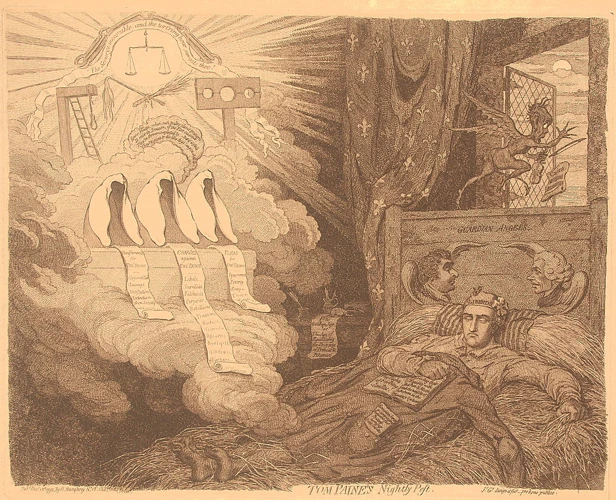Introduction: Unlocking the Secrets of Dreams

Dreams have always fascinated and perplexed human beings, as they are windows into the mysterious realm of the unconscious mind. Throughout history, people have sought to decipher the hidden meanings behind their dreams, believing that they hold messages and insights about their waking lives. In this article, we will explore the intriguing world of dreams, focusing specifically on dreams about turtles and snakes. By delving into the symbolic interpretations and emotional significance of these reptilian creatures within the context of dreams, we can begin to unravel the enigmatic language of the unconscious mind. So, let us embark on this journey of exploration and self-discovery, as we attempt to decode the secrets that lie within our dreams.
Analyzing Turtle Dreams

Dreams about turtles can hold profound symbolic meanings that offer insights into our subconscious thoughts and emotions. The presence of turtles in our dreams often signifies a sense of stability, patience, and wisdom. Turtles, known for their slow and steady nature, represent the importance of taking things at our own pace in life and not rushing into decisions. Additionally, the hard shell of a turtle can symbolize protection, suggesting that we may need to shield ourselves from potential harm or emotional vulnerabilities. Turtles have long been associated with longevity and endurance, reminding us to persevere through challenges and remain resilient. When interpreting turtle dreams, it is crucial to consider the specific circumstances and emotions portrayed in the dream alongside personal associations with turtles. Understanding the symbolic significance of turtles in dreams can provide valuable insights into our own personal growth and transformation, guiding us towards a deeper connection with ourselves. For more information on dream symbolism, you can explore our article on What Does It Mean When You Dream About an Eagle?.
1. Symbolic Interpretations of Turtles in Dreams
Symbolic interpretations of turtles in dreams can reveal profound messages from our subconscious minds. The turtle represents a variety of symbolic meanings, such as wisdom, longevity, and protection. In dreams, seeing a turtle may signify the need to slow down and be patient in various aspects of life. It can also indicate the importance of protecting ourselves emotionally, just as the turtle’s shell shields it physically. Dreaming of a turtle can be a reminder to tap into our inner wisdom and navigate through life’s challenges with a steady and determined approach. Exploring the symbolic interpretations of turtle dreams can provide valuable insights into our personal journeys of growth and self-discovery. To further explore the fascinating world of dream symbolism, you can read our article on What Does It Mean to Dream of a Fox?.
2. Turtle Dreams and Emotional Significance
When it comes to turtle dreams, the emotional significance can provide valuable insights into our inner world. The presence of turtles in our dreams often reflects a need for emotional stability and security. Turtles symbolize the ability to navigate through emotions with grace and patience, reminding us to take a step back and approach our feelings with calmness. The slow and steady nature of turtles can also indicate a need to slow down and take time for self-care, urging us to pay attention to our emotional well-being. Additionally, turtle dreams may signify a desire for a sense of belonging and a need to create boundaries in order to protect ourselves emotionally. Exploring the emotional significance of turtle dreams can offer us a deeper understanding of our own emotional landscape and guide us in fostering a healthier and more balanced emotional life. For more insights into dream symbolism, you can read our article on What Does It Mean When You Dream About Bugs in Your Bed?.
3. Turtle Dreams as a Sign of Transformation
Turtle dreams can also serve as a powerful symbol of transformation. The slow and methodical nature of turtles reflects the transformative process that occurs within us as we navigate life’s challenges and experiences. Just as a turtle retreats into its shell for protection, we may find ourselves withdrawing from the world to reflect, reassess, and undergo personal growth. Turtle dreams can inspire us to embrace change and adaptability, reminding us that transformation is a natural part of our journey. These dreams may be an invitation to explore new perspectives, embrace personal development, and let go of outdated beliefs or habits. By recognizing turtle dreams as a sign of transformation, we can embark on a path of self-evolution and embrace the opportunities for growth that lie ahead.
Deciphering Snake Dreams

Snake dreams have a mysterious and compelling quality, often enveloping us in a mix of fascination and fear. These dreams hold symbolic meanings that can shed light on our innermost thoughts and desires. Snakes are ancient symbols representing transformation, rebirth, and healing. In the realm of dreams, encountering snakes can signify personal growth and change. The presence of a snake in a dream may indicate the need to shed old patterns or beliefs that no longer serve us. It can also serve as a reminder to embrace our own power and tap into our intuition. However, snake dreams can also be a reflection of hidden threats or danger lurking in our waking lives. They invite us to examine any hidden aspects or unresolved conflicts that need our attention. When deciphering snake dreams, it is essential to analyze the context, emotions, and individual associations with snakes, as these elements play a crucial role in unraveling their significance. For more insights into dream symbolism, you can explore our article on What Does It Mean to Dream of a Fox?.
1. Symbolic Meanings of Snakes in Dreams
Snakes have long been regarded as powerful symbols in dreams, carrying a wide range of symbolic meanings. In the context of dreams, snakes often represent transformation, rebirth, and healing. Just as snakes shed their skin, dreams about snakes can indicate a process of personal growth and change. The serpent is also associated with hidden wisdom, intuition, and the exploration of the subconscious mind. Snake dreams may sometimes carry a sexual connotation, symbolizing desires or temptations. However, it is essential to consider the specific circumstances and emotions within the dream to interpret the true meaning. The presence of a snake in a dream can serve as a reminder to embrace change, trust intuition, and be open to transformation. Understanding the symbolic significance of snakes in dreams provides a glimpse into our deepest desires, fears, and potential for growth.
2. Snake Dreams and Personal Growth
Snake dreams are often associated with personal growth and transformation. The presence of snakes in our dreams can symbolize a shedding of old skin and the emergence of a new self. Just as snakes molt their skin, these dreams may represent a need to let go of outdated beliefs or behaviors that no longer serve us. They can be invitations to explore our hidden desires, fears, and emotions, urging us to confront and embrace the changes happening within us. Snake dreams may also indicate a period of healing and rejuvenation, as the snake’s ability to regenerate its body signifies renewal and transformation. By embracing the lessons and opportunities presented in snake dreams, we can embark on a journey of self-discovery and personal growth. Understanding the symbolic significance of snakes in dreams allows us to tap into the depths of our subconscious, unraveling the mysteries that lie within.
3. Snake Dreams as a Reflection of Hidden Threats
Snake dreams often serve as reflections of hidden threats in our lives. When snakes appear in our dreams, they can represent repressed fears, anxieties, or unresolved issues that we may not be consciously aware of. The presence of a snake in a dream can act as a warning sign, urging the dreamer to confront these hidden threats or face the consequences. Snakes have long been associated with deception and danger, and their appearance in dreams can indicate a need for caution or heightened awareness in waking life. It is important to pay attention to the specific actions and behaviors of the snake in the dream, as they can offer clues about the nature of the hidden threats we may be facing. Exploring these dreams and their symbolic meanings can help us uncover the underlying issues we need to address for personal growth and wellbeing.
Common Themes in Turtle and Snake Dreams
Turtle and snake dreams share common themes that offer valuable insights into the symbolism of these reptilian creatures in the realm of dreams. Firstly, both turtles and snakes are archetypal symbols that hold universal meanings across cultures and time. Turtles represent stability, wisdom, and protection, while snakes symbolize transformation, rebirth, and hidden knowledge. Secondly, the interpretation of turtle and snake dreams is highly influenced by personal experiences and associations. For example, a person who had a positive encounter with a turtle in their waking life may view turtle dreams as a positive sign, whereas someone with a fear of snakes may interpret snake dreams as a potential threat. Lastly, the context of the dream plays a vital role in understanding its meaning. The setting, emotions, and interactions within the dream can provide clues about the subconscious messages and emotions being conveyed. By recognizing and exploring these common themes in turtle and snake dreams, we can gain a deeper understanding of our own psyche and the messages our unconscious mind is trying to communicate.
1. Reptiles as Archetypal Symbols
Reptiles, including both turtles and snakes, hold a significant place in the realm of dream symbolism as archetypal symbols. These ancient creatures have been woven into the fabric of human consciousness throughout history, representing primal instincts, wisdom, and transformation. The reptilian archetype taps into our primal nature, connecting us with our deepest instincts and desires. Turtles and snakes embody qualities such as patience, adaptability, and survival skills that have been ingrained in our psyche for centuries. Dreams about these reptiles can serve as powerful reminders of our primal selves and the need to embrace our instincts for personal growth and understanding. By recognizing the archetypal symbolism of reptiles in our dreams, we can gain valuable insights into our own psyche and navigate the complexities of our inner world.
2. The Influence of Personal Experiences on Dream Interpretation
Personal experiences play a significant role in the interpretation of dreams, shaping the unique meaning behind each individual’s dream symbols. Our dreams are influenced by our past experiences, memories, and emotions, which create a personalized dream landscape. For example, if someone has had a positive encounter with a turtle in their life, such as a childhood pet, seeing a turtle in their dream may symbolize feelings of comfort and nostalgia. On the other hand, someone who has a fear or negative association with snakes may interpret a snake dream as a representation of danger or deceit. The interpretation of dream symbols is subjective and deeply intertwined with our personal narratives. By reflecting on our own experiences and emotions, we can gain a deeper understanding of the messages being conveyed to us through our dreams.
3. The Importance of Context in Understanding Dreams
Understanding dreams requires careful examination of the context in which they occur. The meaning of a dream can vary greatly depending on the specific details, emotions, and personal experiences surrounding it. Dreams are highly subjective, and what may have a particular significance to one person could have an entirely different meaning to another. For example, dreaming of a snake could evoke fear and anxiety for some individuals, while for others, it may symbolize transformation and rebirth. The context in which the dream takes place, such as the location, people involved, and other symbols present, plays a crucial role in deciphering its true message. It is vital to explore not only the surface-level interpretation but also to delve into the underlying emotions and personal associations connected to the dream. By considering the broader context, we can unravel the hidden meanings within our dreams and unlock the valuable insights they hold.
Conclusion: Decoding the Language of the Unconscious Mind
Decoding the language of the unconscious mind through dream interpretation is a complex and intriguing endeavor. Dreams, such as those involving turtles and snakes, provide us with a glimpse into the hidden aspects of our psyche. By analyzing symbolic meanings, emotional significance, and common themes in our dreams, we can gain a deeper understanding of ourselves and our journey of personal growth. It is important to remember that dream interpretation is a deeply personal process, influenced by our unique experiences and perspectives. The context of the dream and our own emotional state at the time are also crucial factors to consider. As we explore the depths of our dreams, we unlock the secrets of our subconscious, allowing us to navigate the challenges and opportunities that life presents. So, embrace the language of the unconscious mind and embark on a journey of self-discovery and enlightenment.
Frequently Asked Questions
1. Can turtles and snakes have multiple interpretations in dreams?
Yes, turtles and snakes can have various interpretations in dreams depending on the individual and the specific context of the dream. The symbolism can be influenced by personal experiences, emotions, and cultural backgrounds.
2. What does it mean when a turtle appears in a dream?
Seeing a turtle in a dream often symbolizes stability, patience, wisdom, and protection. It may indicate that you need to take things at your own pace and protect yourself from potential harm.
3. Are snake dreams always negative?
No, snake dreams are not always negative. Snakes can represent transformation, healing, and personal growth. However, they can also reflect hidden threats or unresolved fears.
4. Why do snakes often represent hidden threats in dreams?
Snakes have been associated with hidden threats in dreams due to their reputation in mythology and cultural beliefs. Their secretive nature and venomous characteristics can be linked to potential dangers or deceit.
5. Are turtle dreams related to personal transformation?
Yes, turtle dreams can be associated with personal transformation. The slow and steady nature of turtles represents gradual changes and the need for patience during transformative periods in life.
6. Can the emotional significance of a turtle dream vary?
Yes, the emotional significance of a turtle dream can vary depending on the specific emotions experienced during the dream. It can range from feelings of calmness, protection, and grounding to anxiety or vulnerability.
7. How can personal experiences influence dream interpretation?
Personal experiences can greatly influence dream interpretation. For example, someone who had a positive interaction with a snake in real life may interpret snake dreams as a symbol of healing or positive change.
8. What role does context play in understanding dreams?
Context is crucial in understanding dreams. The specific details, surroundings, and emotions in the dream can give important clues about its meaning. Dreams should always be interpreted within a personal and situational context.
9. Can reptiles in dreams have archetypal symbolism?
Yes, reptiles, including turtles and snakes, can have archetypal symbolism. In numerous cultures and mythologies, reptiles have been associated with deep-rooted psychological themes such as transformation, wisdom, and primal instincts.
10. Are turtle and snake dreams common?
Turtle and snake dreams are relatively common, as these creatures have captured human fascination and symbolism throughout history. The frequency of these dreams may vary among individuals, but they are not uncommon.






